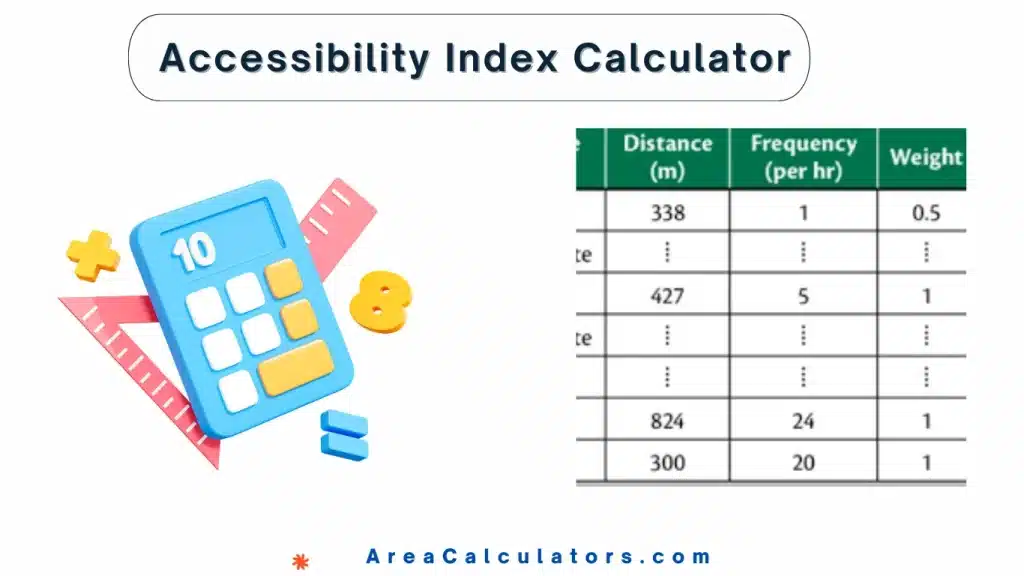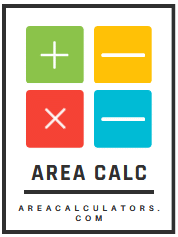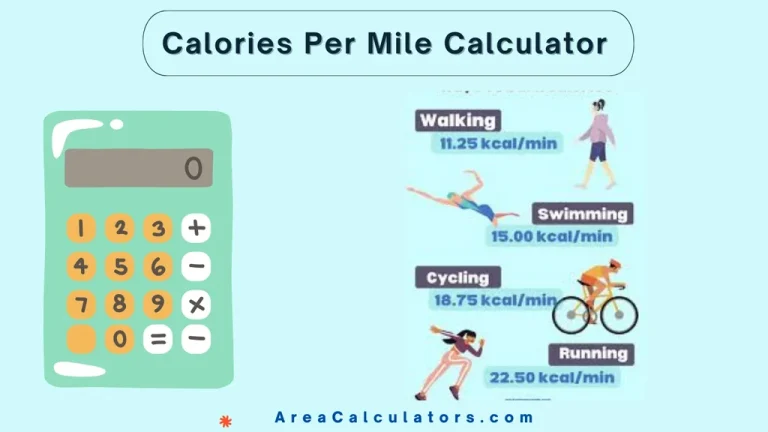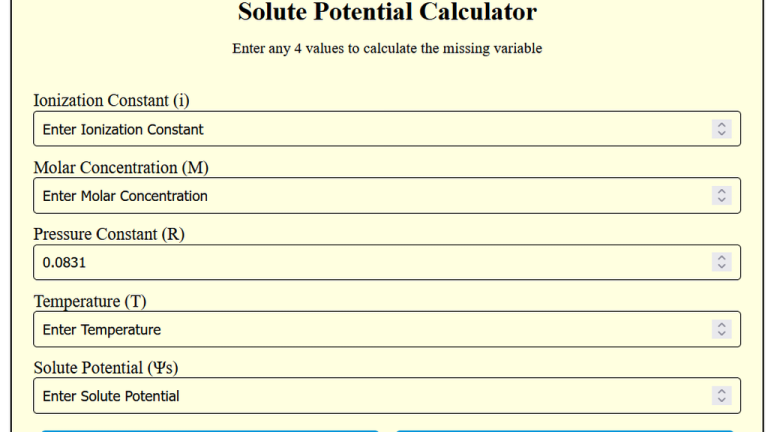Accessibility Index Calculator
Enter values of population, nearest service distance, travel time, number of services etc to use our basic and advanced Accessibility Index Calculator.
The Accessibility Index Calculator is very helpful to assess the accessibility of various services within an specified area. Whether you’re a city planner, urban developer, or community member, understanding accessibility is crucial for creating inclusive and efficient environments.
Formula:
The formula is:
Variables
| Variable | Meaning |
|---|---|
| AI | Accessibility Index (a measure of accessibility in a given area) |
| P | Population in the area |
| D | Distance or travel time to a specific service or facility |
| T | Transportation availability or frequency |
| S | Service capacity (e.g., the number of available services or facilities) |
| A | Area size (geographical area being considered) |
How to Calculate ?
Firstly, you need to determine the population (P) of the area being studied. Now , assess the distance (D) or travel time to the nearest relevant service or facility. After that, evaluate the availability or frequency of transportation (T) within the area. Fourthly, identify the service capacity (S), which could be the number of available services or facilities. And finally, determine the size of the area (A). Multiply the population, distance, and transportation availability, then divide by the product of service capacity and area size to calculate the Accessibility Index (AI).

Solved Examples:
Example 1:
Given:
- Population (P) = 10,000
- Distance (D) = 5 km
- Transportation (T) = 10 buses per hour
- Service Capacity (S) = 20 facilities
- Area Size (A) = 50 km²
| Calculation | Instructions |
|---|---|
| Step 1: AI = | Start with the formula. |
| Step 2: AI = | Replace P with 10,000, D with 5 km, T with 10, S with 20, and A with 50 km². |
| Step 3: AI = | Multiply the values in the numerator and denominator. |
| Step 4: AI = 500 | Divide 500,000 by 1000 to get the Accessibility Index. |
Answer:
The Accessibility Index is 500.
Example 2:
Given:
- Population (P) = 25,000
- Distance (D) = 8 km
- Transportation (T) = 15 buses per hour
- Service Capacity (S) = 30 facilities
- Area Size (A) = 100 km²
| Calculation | Instructions |
|---|---|
| Step 1: AI = | Start with the formula. |
| Step 2: AI = | Replace P with 25,000, D with 8 km, T with 15, S with 30, and A with 100 km². |
| Step 3: AI = | Multiply the values in the numerator and denominator. |
| Step 4: AI = 1000 | Divide 3,000,000 by 3000 to get the Accessibility Index. |
Answer:
The Accessibility Index is 1000.
What is the Accessibility Index Calculator?
The Accessibility Index Calculator is useful in a way to measure the accessibility of services or facilities within a given area. It is equally helpful for policy makers and researchers to plan how the residents in an specific area can access the basic life services like health, education, public transport.
City planners can use the Accessibility Index to evaluate the availability of essential services, such as healthcare facilities, schools, and public transportation, within neighborhoods. This information guides urban development strategies to improve accessibility for residents.
Conclusion
The Accessibility Index Calculator is a powerful tool for evaluating the availability of services and amenities within a defined area. By considering population, distance, travel time, and area, stakeholders can make informed decisions for better life of citizens within the community.




